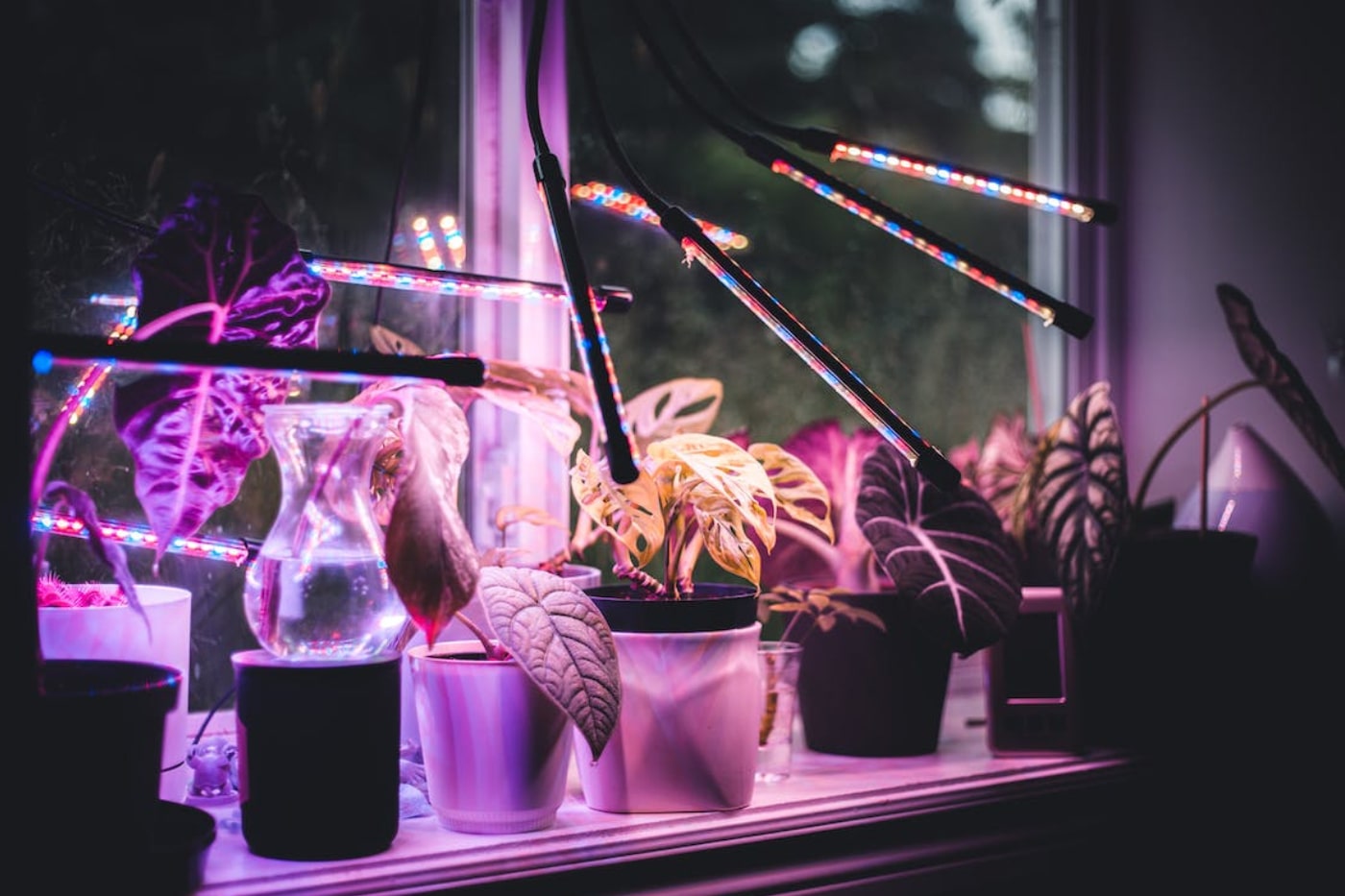Indoor plants can transform your space, bringing life and color. But, they need the right light to thrive.
Finding the best lighting for indoor plants can be tricky. Each plant has specific light needs. Some love bright light, while others prefer shade. Understanding these needs helps your plants grow healthy and strong. In this blog, we’ll explore the best lighting options for different indoor plants.
Whether you have a sunny windowsill or a dark corner, we have tips for you. With the right lighting, your indoor garden will flourish. Let’s dive in and discover how to keep your plants happy and vibrant.
Importance Of Lighting For Indoor Plants
Lighting is a vital factor for indoor plants. It affects their growth and health. Plants need light to perform essential functions. Without proper lighting, indoor plants may struggle and not thrive.
Role In Photosynthesis
Light plays a key role in photosynthesis. This process helps plants make food. Plants use light to convert carbon dioxide and water into glucose. This glucose fuels their growth and development. Without enough light, photosynthesis slows down. Plants may become weak and unhealthy.
Impact On Growth And Health
Proper lighting impacts plant growth. Light influences how plants grow and develop. It affects their size, shape, and color. Good lighting helps plants grow stronger and healthier. Poor lighting can cause slow growth and yellow leaves. Some plants may even die.
Light also affects blooming. Many indoor plants need specific light conditions to flower. Without enough light, flowering plants may not bloom well. Proper lighting ensures your plants stay vibrant and beautiful.
Types Of Light Sources
Choosing the right light source for indoor plants is essential. Plants need light for photosynthesis and healthy growth. Two primary types of light sources can provide the necessary illumination for indoor plants. Let’s explore them.
Natural Light
Natural light is the best option for indoor plants. It provides a full spectrum of light. This helps plants grow strong and healthy. Here are some ways to maximize natural light:
- Place plants near windows that receive plenty of sunlight.
- Use light-colored curtains to diffuse the light.
- Rotate plants regularly to ensure even light exposure.
Some plants thrive in direct sunlight. Others prefer indirect light. Understand your plant’s needs to position them correctly.
Artificial Light
Artificial light is a great alternative. Especially for rooms with limited natural light. There are various types of artificial lights:
| Type of Light | Advantages | Disadvantages |
|---|---|---|
| Fluorescent Lights | Energy-efficient, Cool to touch | Less intense light, Needs to be close to plants |
| LED Lights | Long-lasting, Customizable spectrum | Higher initial cost |
| Incandescent Lights | Easy to find, Inexpensive | Short lifespan, Generates heat |
Fluorescent lights are ideal for low-light plants. They are energy-efficient and cool to touch. LED lights are versatile and long-lasting. They can be customized to provide the right spectrum for plants. Incandescent lights are not the best choice for plants. They generate too much heat and have a short lifespan.
Choosing the right light source depends on your plant’s needs. A combination of natural and artificial light often works best. This ensures plants get the light they need throughout the day.
Choosing The Right Grow Lights
Choosing the right grow lights is crucial for the health of your indoor plants. Grow lights mimic natural sunlight, providing the necessary light spectrum for plants to thrive. Different types of grow lights cater to various plant needs, ensuring optimal growth.
Led Grow Lights
LED grow lights are popular among indoor gardeners. They are energy-efficient and last longer than traditional bulbs. They emit less heat, making them ideal for small spaces. LEDs offer a full spectrum of light, including red and blue wavelengths, which are essential for plant growth.
Here are some key benefits of using LED grow lights:
- Energy Efficiency: LEDs consume less power, saving you money on electricity bills.
- Longevity: They have a longer lifespan, reducing the need for frequent replacements.
- Low Heat Emission: LEDs produce minimal heat, preventing plant burns and overheating.
- Full Spectrum: They provide a balanced light spectrum, promoting healthy plant development.
Fluorescent Grow Lights
Fluorescent grow lights are another excellent option for indoor plants. They are affordable and widely available. These lights work well for seedlings and low-light plants. Fluorescent lights come in two main types: T5 and T8.
Consider these features of fluorescent grow lights:
| Type | Characteristics |
|---|---|
| T5 | High output, compact, suitable for small spaces |
| T8 | Lower output, more affordable, good for larger areas |
Fluorescent grow lights are suitable for:
- Seedlings: They provide the gentle light needed for young plants.
- Low-Light Plants: Perfect for plants that do not require intense light.
- Budget-Friendly: They are cost-effective, making them accessible for beginners.
Both LED and fluorescent grow lights have unique advantages. Choose the right one based on your plant’s needs and your growing environment.

Credit: www.amazon.com
Light Spectrum And Plant Growth
Understanding the light spectrum is key for indoor plant growth. Plants need different wavelengths of light to thrive. The two most important types are blue light and red light. Each plays a unique role in the plant’s life cycle. Knowing their benefits helps you choose the best lighting.
Blue Light Benefits
Blue light is crucial for vegetative growth. It helps plants grow strong stems and healthy leaves. This light, ranging from 400 to 500 nm, is absorbed by chlorophyll. Blue light ensures plants stay compact and robust.
Here are some specific benefits of blue light:
- Promotes strong root development
- Improves leaf thickness
- Enhances overall plant health
Red Light Benefits
Red light, ranging from 600 to 700 nm, is essential for flowering and fruiting. It helps plants produce blooms and seeds. Red light is absorbed by phytochromes, which control flowering.
Key benefits of red light include:
- Stimulates flowering
- Boosts fruit production
- Supports seed germination
Combining blue and red light creates an ideal environment for plants. This mix mimics natural sunlight, giving plants the full spectrum they need.
Positioning And Distance Of Lights
Proper lighting is essential for indoor plants. The right positioning and distance of your lights can make a big difference. Plants need light to grow well. Placing lights in the best spot will help them thrive.
Optimal Placement
Put the lights directly above your plants. This mimics natural sunlight. Place small plants on shelves. Use taller stands for larger plants. This helps distribute light evenly.
Adjusting Distance
The distance between the light and plants matters. Too close and they can burn. Too far and they won’t get enough light. A general rule is to keep lights 6-12 inches away. Monitor your plants. Adjust the distance if needed.

Credit: www.reddit.com
Light Duration And Plant Needs
Understanding the light duration for indoor plants is crucial. The amount of light plants receive affects their growth. Some need more light, while others thrive with less. Knowing the right light duration ensures your plants stay healthy and vibrant.
Photoperiod For Different Plants
Different plants have varying light needs. Some require long days with plenty of sunlight. Others prefer shorter days with less light. For example, succulents and cacti need about 12 to 14 hours of light daily. Tropical plants, like ferns, need around 8 to 10 hours of light.
Flowering plants often need specific light periods. They might require 12 hours of light followed by 12 hours of darkness. This photoperiod triggers blooming. Understanding the specific needs of your plants helps in setting the right light duration.
Balancing Light And Darkness
Plants also need darkness. They use this time to rest and process nutrients. Balance light and darkness to keep your plants healthy. Too much light can cause stress. Not enough light can stunt growth.
Using timers can help manage light duration. Set them to provide the right amount of light and darkness. This keeps your plants on a consistent schedule. Maintaining this balance is key to healthy indoor plants.
Common Mistakes To Avoid
Indoor gardening is a rewarding hobby. Yet, many people make common mistakes with lighting. These mistakes can harm your plants. Below are some key pitfalls to avoid.
Overexposure To Light
Too much light can scorch plant leaves. Direct sunlight for long hours is harmful. Think about how much light your plant needs. Different plants have different needs. Succulents and cacti love the sun. Ferns and orchids prefer indirect light.
Signs of overexposure include:
- Brown, crispy leaves
- Faded leaf color
- Wilting during the day
Use sheer curtains to filter sunlight. Rotate the plant to ensure even light exposure. Remember, balance is key.
Insufficient Light
Insufficient light can also stress plants. They may struggle to grow or even die. Low light plants like snake plants can tolerate low light. But, they still need some light to thrive.
Signs of insufficient light include:
- Yellowing leaves
- Leggy growth
- No new growth
Place plants near windows or use grow lights. LED grow lights are energy-efficient and effective. Adjust the distance between the light and plant. Too close, and you risk overexposure. Too far, and the light won’t be effective.
By avoiding these mistakes, your indoor plants will flourish.

Credit: ecogardener.com
Monitoring And Adjusting Light Conditions
Understanding the light needs of your indoor plants is crucial. Each plant has unique light requirements. Some need bright light, while others thrive in low light. Monitoring and adjusting light conditions ensure your plants grow healthy. It can help prevent common problems related to insufficient or excessive light.
Using Light Meters
Light meters are valuable tools for plant care. They measure the light intensity in your space. This helps you determine if your plants receive enough light. Place the meter near your plants. Check the readings during different times of the day. Adjust your lighting setup based on these readings.
Some light meters provide readings in foot-candles or lux. Compare these readings with your plant’s light needs. High light plants need around 1,000 to 2,000 foot-candles. Low light plants need about 50 to 250 foot-candles. Using a light meter simplifies this process. It ensures your plants get the right amount of light.
Signs Of Light Stress
Plants show signs of light stress when light conditions are not right. Look for these signs to adjust light levels. Yellowing leaves often indicate too much light. Move the plant to a shadier spot if this happens. Wilting leaves can also be a sign of light stress.
If leaves are small and pale, the plant may need more light. Move it to a brighter area. Leggy growth, where stems become long and weak, is another sign. This means the plant is reaching for more light. Adjust the light conditions to prevent these issues.
Regularly check your plants for these signs. Adjust the light levels as needed. This ensures your plants stay healthy and vibrant.
Frequently Asked Questions
What Type Of Lighting Is Best For Indoor Plants?
LED grow lights are best for indoor plants. They provide energy-efficient, full-spectrum light. Fluorescent lights are also effective and affordable.
How Many Hours Of Light Do Indoor Plants Need?
Indoor plants generally need 12-16 hours of light daily. Adjust based on plant species and growth stage.
Can Indoor Plants Grow With Artificial Light?
Yes, indoor plants can grow well with artificial light. Use LED or fluorescent lights for best results.
Do Indoor Plants Need Direct Sunlight?
Not all indoor plants need direct sunlight. Many thrive in indirect light or shaded conditions.
Conclusion
Choosing the right lighting for indoor plants is essential. It ensures healthy growth and vibrant colors. LED grow lights offer energy efficiency. Fluorescent lights are great for small spaces. Natural light is always beneficial. Combining different light sources can yield the best results.
Remember, each plant has unique light needs. Observe your plants and adjust lighting as required. With proper care, your indoor plants will thrive. Happy gardening!



